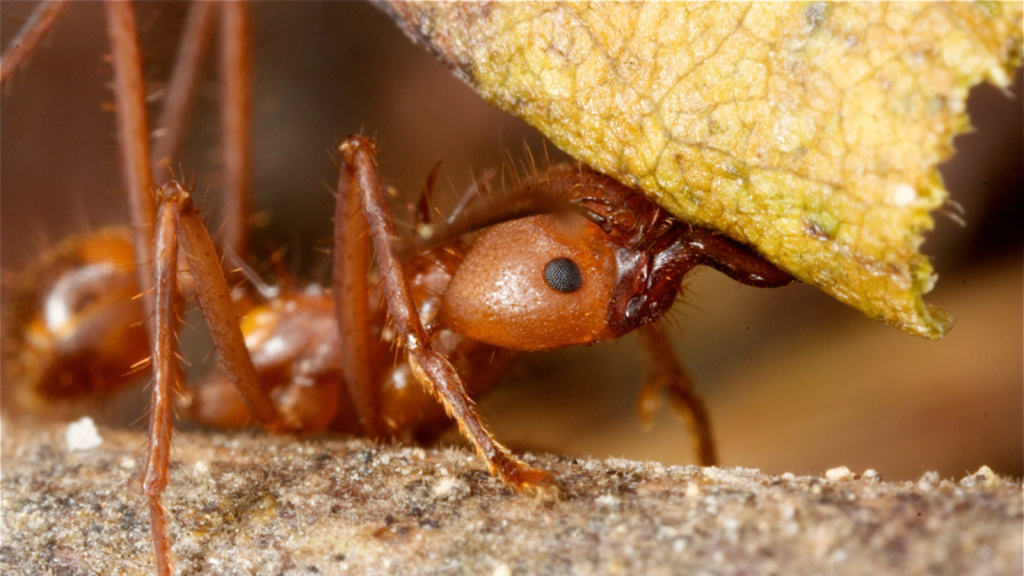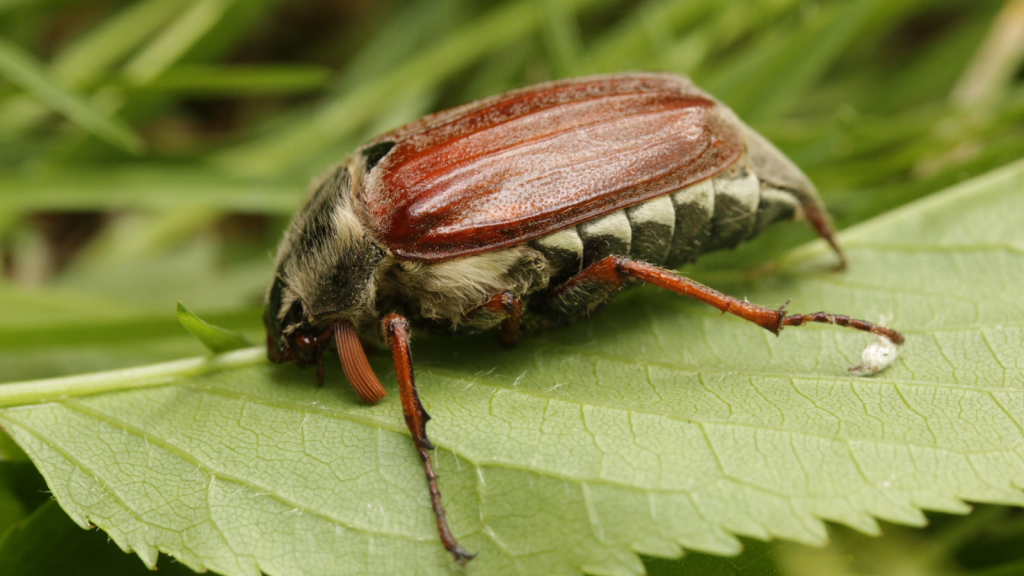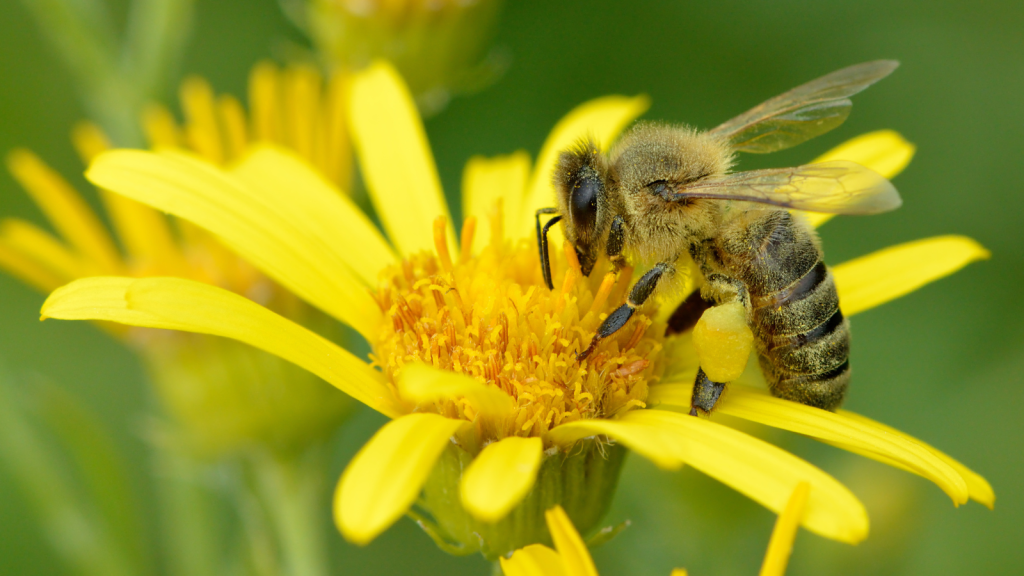Nature never ceases to amaze us with its wonders, and some of the most impressive feats of strength come from the tiniest of creatures. These miniature marvels can lift, pull, and push objects many times their own body weight, putting even the strongest humans to shame. From insects to arachnids, these pint-sized powerhouses demonstrate that size isn’t everything when it comes to raw strength. Get ready to be astonished by these small but mighty beings that prove that great things really do come in small packages.
Dung Beetle

The humble dung beetle might not seem impressive at first glance, but don’t let its size fool you. These determined insects can pull up to 1,141 times their own body weight – equivalent to a human hauling six double-decker buses. They use this incredible strength to roll balls of dung many times their size, which serve as both food and breeding chambers. Dung beetles play a crucial role in nutrient cycling and soil health by burying dung, which helps to fertilize the soil and reduce greenhouse gas emissions.
Rhinoceros Beetle

As one of the largest beetles in the world, the rhinoceros beetle can carry up to 850 times its own weight on its back. This is like a human lifting two fully-grown African elephants. Their immense strength helps them dig through soil and lift heavy objects in search of food and mates. Male rhinoceros beetles also use their strength in combat, fighting with their large horns to win the right to mate.
Leafcutter Ant

These tiny insects can carry leaves and other plant material weighing up to 50 times their own body weight. To put this in perspective, it would be like a human carrying a fully-grown male grizzly bear on their back. Leafcutter ants use their strength to harvest plant material for their vast underground fungus gardens. These ants are so efficient that a single colony can harvest up to 150 kg of leaves in a single day.
Oribatid Mite

Also known as moss mites, these microscopic arachnids can produce a pulling force of up to 1,180 times their own body weight. This would be equivalent to a human pulling 82 adult male African elephants. Their incredible strength helps them navigate through soil and decaying plant matter in search of food. Oribatid mites are essential decomposers, breaking down organic matter and contributing to soil formation.
Asian Weaver Ant

These social insects can lift up to 100 times their own body weight with their mandibles. For a human, this would be like lifting a small car with your teeth. Weaver ants use this strength to carry food back to their nests and to construct their intricate leaf nests high in the trees. Their strong mandibles also make them effective predators, capable of subduing insects much larger than themselves.
Flea

Fleas might be a nuisance, but their jumping ability is truly remarkable. They can leap up to 200 times their own body length, which is equivalent to a human jumping over the Eiffel Tower. This incredible feat requires immense leg strength, making fleas one of the strongest creatures relative to their size. Fleas achieve this remarkable jump through a unique protein in their legs called resilin, which acts like a powerful spring.
Cockchafer Beetle

Also known as the May bug, this beetle can lift up to 300 times its own body weight. To put this in human terms, it would be like lifting two adult blue whales. Cockchafers use their strength to burrow through soil and push through dense vegetation. Their powerful legs also allow them to cling tightly to plants, even in strong winds or when predators attempt to dislodge them.
Horned Dung Beetle

This powerhouse can pull 1,141 times its own body weight – the equivalent of a human pulling six full double-decker buses. Like their dung beetle cousins, they use this strength to roll dung balls for food and breeding purposes. The horned dung beetle’s impressive strength is due to its low center of gravity and long, powerful legs.
Fire Ant

These small but fierce insects can lift up to 50 times their own body weight. For a human, this would be like carrying a humpback whale. Fire ants use their strength to build complex nests and to overpower much larger prey. Their strength also allows them to form living rafts during floods, linking their bodies together to create a floating platform that can survive for weeks.
Mole Cricket

These unusual insects can lift up to 100 times their own body weight. This would be like a human lifting a large African elephant. Mole crickets use their strength to dig elaborate tunnel systems in soil, sometimes pushing through roots and rocks in the process. Their powerful forelegs are specially adapted for digging, with shovel-like extensions that make them efficient excavators.
Rhinoceros Beetle Larva

Even in its larval stage, the rhinoceros beetle shows impressive strength. These grubs can turn themselves over when placed on their backs, despite weighing up to 4.5 grams. This requires significant muscle power and is equivalent to a human doing a backwards somersault while carrying an adult gorilla. The larva’s strength comes from its segmented body structure, which allows it to leverage its weight effectively.
Pontarachnid Mite

These tiny aquatic mites can withstand water pressures of up to 820 atmospheres. This is like a human surviving at the bottom of the Mariana Trench without any protective equipment. Their incredible strength allows them to thrive in high-pressure underwater environments. Pontarachnid mites achieve this feat through a specially adapted exoskeleton that resists compression.
European Spruce Bark Beetle

Despite being only 5mm long, this beetle can chew through solid wood with ease. Its mandibles exert a force equivalent to a human biting through a steel bar as thick as your arm. This strength allows them to create complex tunnel systems within tree bark. The beetle’s mandibles are reinforced with zinc, making them exceptionally hard and durable.
Tardigrade

Also known as water bears, these microscopic animals can survive extreme conditions that would kill most other creatures. They can withstand pressures six times greater than those found in the deepest ocean trenches, temperatures close to absolute zero, and even the vacuum of space. Tardigrades achieve this incredible resilience through a process called cryptobiosis, where they essentially shut down their metabolism and enter a state of suspended animation.
Honey Bee

A single honey bee can carry up to 300 times its own body weight in the air. This would be like a human flying while carrying two adult pandas. Bees use this strength to carry pollen and nectar back to their hives, sometimes flying for miles with their heavy loads. Their flight muscles are incredibly efficient, allowing them to beat their wings over 230 times per second.
Leaf-Footed Bug

These insects can produce a gripping force with their legs that’s 80 to 100 times their own body weight. For a human, this would be like hanging onto a ledge while carrying a large SUV. This strength helps them cling to plants even in strong winds or when predators try to dislodge them. The leaf-footed bug’s impressive grip is due to specialized structures on their feet called tarsal pads, which create strong adhesive forces.
Chagas Bug

This small insect can pull up to 1,400 times its own body weight. In human terms, this would be like pulling 100 fully-grown elephants. Chagas bugs use this strength to navigate through dense vegetation and tight spaces in search of food and shelter. Their remarkable pulling power is made possible by a combination of strong leg muscles and a low center of gravity.
Modern Sea Monsters | 15 Massive Marine Mammals Still Roaming Our Oceans

The oceans of our planet are home to some of the most awe-inspiring creatures on Earth. These marine mammals, with their enormous size and incredible adaptations, seem alien or prehistoric. But an actual up-close interaction with one of these incredible creatures is life-changing. Their lives and sheer size might be unfathomable, but their intelligence and magnificence is clear for all to see. From the largest animal to ever exist to deep-diving behemoths with teeth as big as your arm, these creatures are awe-inspiring and remind us why we need to do more to save our oceans before it’s too late.
Read More: Modern Sea Monsters | 15 Massive Marine Mammals Still Roaming Our Oceans
Becky is a fervent wildlife enthusiast and pet care expert with a diploma in canine nutrition. Her love for animals stretches beyond the domestic, embracing the wild tapestry of global fauna. With over a decade of experience in animal welfare, Becky lends her expertise to OutlandishOwl through insightful articles, captivating wildlife information, and invaluable guidance on pet nutrition. Her work embodies a deep commitment to understanding the intricate lives of animals and a passion for educating others on sustaining natural habitats. Becky's hands-on conservation efforts and her knack for translating complex dietary science into practical pet feeding tips make her an indispensable voice for creatures great and small.




